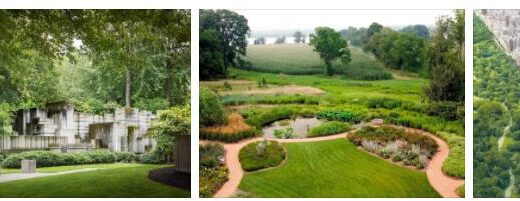World Heritages in China
National Park of the “Three Parallel Rivers” (World Heritage)
The national park in northwestern Yunnan includes several protected areas of great biodiversity. The area covers 1.7 million hectares in the upper reaches of the Yangtze, Mekong and Salween. The three rivers flow through a mountainous region with peaks up to 6000 m high and deep gorges.
National Park of the “Three Parallel Rivers”: Facts
| Official title: | Protection zones in the national park of the »Three Parallel Rivers« in Yunnan |
| Natural monument: | Seven protection zones in the national park with a total area of 170,000 km²; upper courses of the three great rivers Yangtze, Mekong and Salween; flow through gorges up to 3,000 meters deep, from up to 6,000 meters high, snow-capped mountains; Biodiversity in flora and fauna, including azaleas, gentian species, primroses, lady’s slipper orchids and lilies as well as antelopes, snow leopards, Bengal tigers, black-necked cranes |
| Continent: | Asia |
| Country: | China |
| Location: | Northwest of Yunnan Province and adjacent Tibet |
| Appointment: | 2003 |
| Meaning: | Site with rare alpine landforms and exceptional biological diversity |
Cloud Ridge Grottoes (World Heritage)
The world heritage site at the southern foot of Wuzhou Mountain in Shanxi includes 252 caves and 51,000 statues carved into the rock. The grottoes, also known as the “Cloud Ridge Grottoes”, are masterpieces of Buddhist sculpture. They originated in the 5th and 6th centuries.
Cloud Ridge Grottoes: Facts
| Official title: | Yungang Grottoes (“Cloud Ridge Grottoes”) |
| Cultural monument: | Located at the southern foot of Wuzhou Mountain; 252 caves and 51,000 Buddhist statues (up to 17 m high) from the 5th and 6th centuries. |
| Continent: | Asia |
| Country: | China |
| Location: | 16 km west of Datong in North China’s Shanxi Province |
| Appointment: | 2001 |
| Meaning: | Unique testimony of the Buddhist art of the stone rots in China |
Dujiangyan Irrigation System (World Heritage)
Mount Qingcheng with its palaces and temples is considered to be the origin of Daoism. The irrigation system in Dujiangyan with its historical weir dates from the 3rd century BC. According to ehistorylib, it is one of the most important hydraulic engineering projects in ancient China and is still used today to regulate the Minjaina River and to irrigate the Chengdu plains.
Dujiangyan Irrigation System: Facts
| Official title: | Qincheng Mountain and Dujiangyan Irrigation System |
| Cultural monument: | Mount Qingcheng, one of the origins of Daoism, has long been one of the most influential religions in East Asia, with a temple; Dujiangyan irrigation system (from the third century BC) as one of the most famous hydraulic engineering projects from ancient China; important function in regulating the Minjiang River and irrigating the Chengdu plains |
| Continent: | Asia |
| Country: | China |
| Location: | Dujiangyan in southwest China’s Sichuan Province |
| Appointment: | 2000 |
| Meaning: | Testimony to the establishment of Daoism; Irrigation system as a milestone in the development of water supply and technology |
Longmen Caves (World Heritage)
The Buddhist rock temples of the northern Wei Dynasty were started in the 5th century and added to the 9th century. The approximately 2300 grottos and niches are exceptional examples of Chinese stone carving. In many grottos there are pagodas, inscriptions and statues.
Longmen Grottoes: Facts
| Official title: | Longmen Grottoes |
| Cultural monument: | Over 2,300 grottos and niches with Buddhist cave temples carved into the rock and sculptures from the late epoch of the northern Wiedynasty to the Tang dynasty (construction started in 493, duration approx. 400 years); numerous pagodas, memorial stones, Buddha figures and stone sculptures |
| Continent: | Asia |
| Country: | China |
| Location: | 13 km south of Luoyang, on the banks of the Yike River |
| Appointment: | 2000 |
| Meaning: | Extraordinary testimony to the pinnacle of Chinese stone chiselling |
Tombs of the Ming and Qing Dynasties (World Heritage)
The imperial tombs from the 14th to 20th centuries embody the continuity of feudal China and its view of power. Their location was chosen according to geomantic ideas of Fengshui doctrine.
Ming Dynasty and Qing Dynasty Tombs: Facts
| Official title: | Imperial tombs of the Ming and Qing dynasties |
| Cultural monument: | Tombs built according to the principles of geomancy and Fengshui; richly decorated with statues and carvings |
| Continent: | Asia |
| Country: | China |
| Location: | Nanjing and Beijing |
| Appointment: | 2000 |
| Meaning: | Testimony to the five centuries of continuity of a worldview and power concept typical of feudal China |
Xidi and Hongcun Villages (World Heritage)
The two villages in southern Anhui are examples of historical, non-urban settlements. Architecture, house facades and the water supply system document the local style of living in the 15th and 16th centuries.
Xidi and Hongcun Villages: Facts
| Official title: | Xidi and Hongcun villages |
| Cultural monument: | Two traditional settlements with a special, village road system from the 15th to 17th centuries; traditional architecture in the style of the imperial era as well as a comprehensive water supply system from the 14th century as evidence of the historical way of settlement in China |
| Continent: | Asia |
| Country: | China |
| Location: | Xidi and Hongcun in southern Anhui |
| Appointment: | 2000 |
| Meaning: | Unique evidence of a past village style of settlement |


